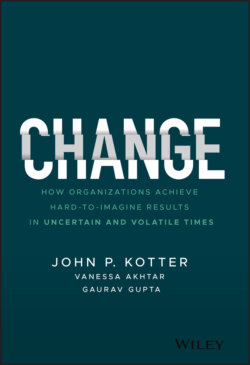Читать книгу Change - Gaurav Gupta - Страница 13
Chapter 2 The Emerging Science of Change
ОглавлениеThe number of different beliefs about why people and organizations often struggle with more change is far from small. The same can be said about the number of possible solutions for how you might mobilize individuals or enterprises to adapt more swiftly and intelligently. The great number of possibilities can leave one confused or even with a sense that few useful generalizations can be made in this soft and convoluted realm.
In fact, we have reached a point where our very understanding of change is changing. There is today what might best be called an emerging science of change—especially the complex, transformational change that needs to happen more often, at faster speeds, and even under conditions of greater uncertainty. This new science tells us much about why people struggle with change, why a few succeed, what the latter do differently, and how we can use this knowledge in our own organizations.
As introduced in Chapter 1, this emerging science—with a set of concepts and principles and tactics—has three major root systems. One system involves the study of individuals: specifically, our “human nature” and resistance to or capacity for change. This study is based on research that goes back centuries but has recently been enhanced greatly with a trove of new material from brain science.
A second root involves the study of the modern organization, work that seriously took off in the 1930s and 1940s. Peter Drucker's The Concept of the Corporation was the most visible early example. Some very informative projects in this tradition have come in the past decade.
The third area is the actual study of modern organizations and the people in them trying to lead change, with commentary on outcomes and speculation about causality. Initial examples of this work can be found in the 1950s, but most of this information is much more recent. This increased work on internal change and leadership very much parallels the increase in the rate of contextual change around organizations.
